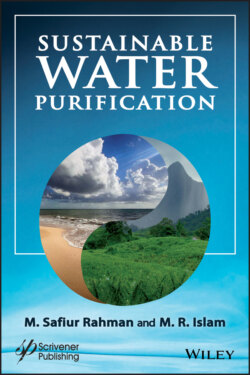Читать книгу Sustainable Water Purification - M. R. Islam - Страница 11
Оглавление
Preface
Every civilization in human history recognized the importance of water and understood the importance of water and air in their natural state for the sustenance of life. This all changed during the plastic era. For over a century, the current civilization has been synonymous with synthetic chemicals. All such processes undergo deliberate ‘denaturing’, starting with removing innate water, which is ubiquitous in nature. At present, between 25,000 to 84,000 synthetic chemicals are used to drive modern corporate culture, the hallmark of Capitalism. The number of synthetic chemicals has multiplied 25 times since 1970, with a rise in economic dividend from $171 billion to over $4 trillion today. As these chemicals have created numerous problems in all aspects of civilization, another line of industry has cropped up – the so-called waste management and cleanup industry, which ironically has introduced a new line of synthetic chemicals to ‘purify’ the current contamination.
In this scheme, water is the most important yet most hapless victim. There are numerous techniques available today to purify water – the most potent purifier on Earth. Ironically, all techniques use chemicals to replace the contaminants of the water under treatment. These chemicals are all toxic to the environment, despite being ‘certified’ by the same establishment that upholds the plastic culture, which is responsible for the current toxic shock. It should come as no surprise that all techniques used for water purification today are unsustainable. This dichotomy arises from the fact that today’s civilization is driven by science that is incapable of identifying the causes, let alone remedying them of the inherent unsustainability of purification techniques.
In this book, the source of contaminations is identified as synthetic chemicals, which should not have entered the ecosystem to begin with. Any purification technique must use sustainable techniques. Sustainability lies within the adoption of a zero-waste scheme, rather than struggling to ‘minimize’ waste. In this book, sustainable purification techniques are presented that are applicable to municipal, agricultural and industrial sectors. They range from organic contaminants to radioactive wastes. For each technique, it is shown how value addition and conversion of waste into value-added products can turn a zero-waste process into an economically successful endeavor. This book shows that any paradigm shift to turn this toxic culture into a healthy one starts with water – the first ‘element’ of the universe.
M. Safiur RahmanM.R. Islam
